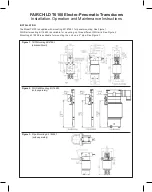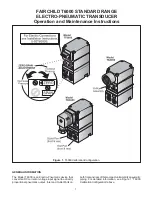
VHF 100/200 Series Owner’s Manual
2
Digital Selective Calling
Position data received from stations that respond to position-request calls is sent over the
NMEA network, so that you can track the vessels using your Garmin chartplotter. For more
information on NMEA 0183 and NMEA 2000, see
.
Selecting the Vessels and Activating the Call
1. Press the
DSC
key.
2. Select
POS. TRACKING
>
ADD ENTRY
. You can have no more than three vessels on
the position tracking list at one time. If you select
ADD ENTRY
and the radio sounds a
triple error beep, you must delete an entry before adding another.
3. Select the vessels from the directory.
4. Select
BEGIN TRACKING
. The icon is displayed to indicate that position tracking is
in progress.
5. Select
EXIT
to stop position tracking.
Viewing and Deactivating Vessels on the Position Tracking List
1. Press the
DSC
key.
2. Select
POS. TRACKING
.
3. To view the vessels on the list, select
VESSELS
.
4. To configure the radio to keep a vessel on the list, but to not call that vessel for position
tracking information, select the vessel.
5. Select
OFF
.
Deleting a Vessel from the Position Tracking List
1. Press the
DSC
key.
2. Select
POS. TRACKING
>
DELETE
.
3. Select the vessel.
4. Select
YES
to delete the vessel from the list. Select
NO
to return to the previous screen
without deleting.
Working with the Call Logs
For every DSC call that your radio receives, the calling station, type of call, and date and
time of the call are recorded in the call logs. The latitude and longitude of the calling station
are also recorded if they are transmitted with a call.
There are three categories for calls that are logged: distress, position, and other. The
following table indicates where each type of call is located in the call logs.
Call Type
Call Log
Distress
Distress
Distress relay
Distress
Summary of Contents for VHF 200 Series
Page 59: ......
















































